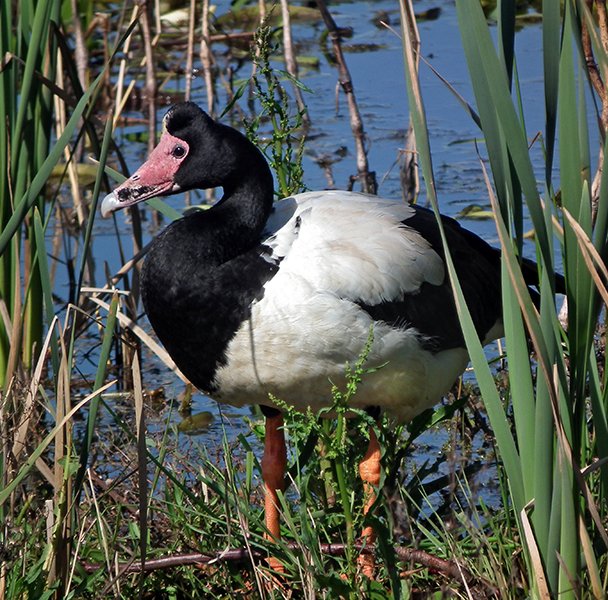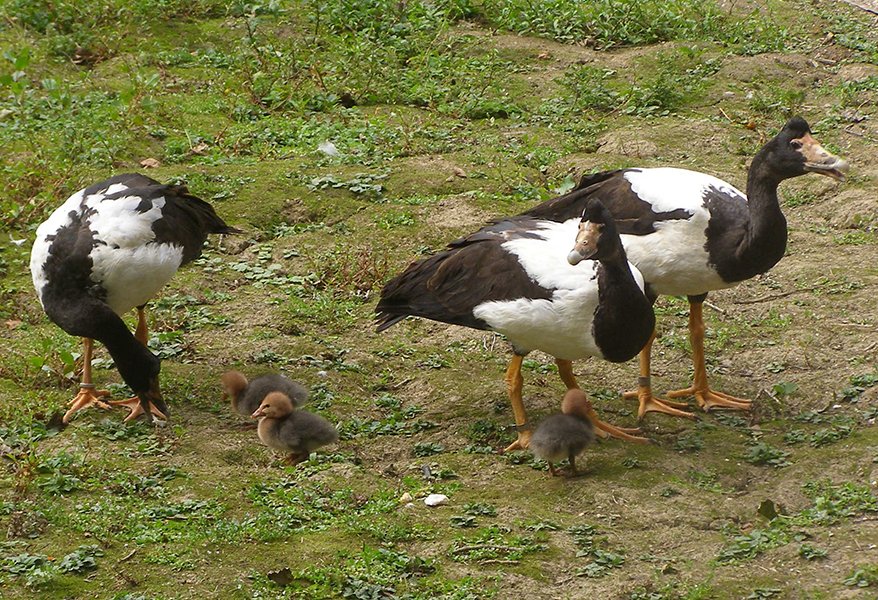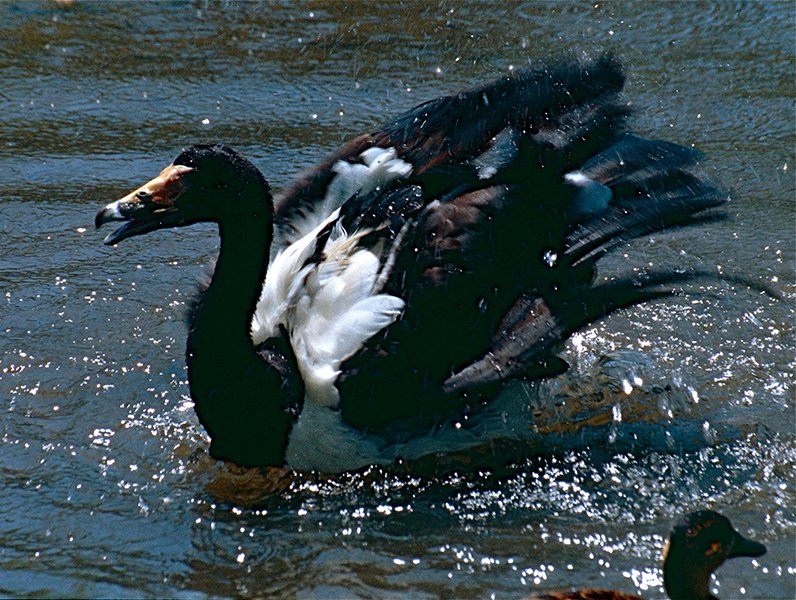Winging over the Lakes
Djambalawa at English Wikipedia, CC BY 3.0, via Wikimedia Commons
Anseranatidae
by Inspector Barry Mins on October 18, 2022Hey kids, welcome back to our series on the mysteries of created kinds.
This week we move from burrows to lakes and from Central America to Northern Australia and New Guinea. Instead of amphibians, we are looking for a bird kind. It has been described as a living fossil.

This kind is made up of a single species. The species is common in its native range and is harvested for its meat.1 It is distributed widely in waterways and swamps within its home range.2 These birds seem to remain within the same range year-round, with little movement from season to season.3
These water-loving birds breed in the wet season and produce a large number of eggs—often 9 or 10.4 Sometimes females will lay eggs in nests not their own, a phenomenon called “nest parasitism.”5 The nests are built largely by the males and are begun approximately two months before the eggs are laid.6 Eggs are incubated for approximately 25 days.7
Has anyone figured it out yet? If you’re Australian, you might have; otherwise, I don’t expect you did. This week’s kind is the Anseranatidae—the Magpie Goose. Stay tuned for next week when we head to South America, looking for an unresearched type of frog.
Try out this fun crossword puzzle!
Clue
Your clue for the week is:
There are 52 species in this frog kind found exclusively in South America.
Ask a Question
Have you ever had a question about created kinds but didn’t know who to ask? Have you ever wanted to learn more about your favorite kind? Well, now you can! You can ask me, Inspector Barry Mins, a question! Have your parents help you fill out this form, and you might get your question answered in my column! If you have any questions about created kinds, feel free to send them my way!
Footnotes
- B. W. Brook and P. J. Whitehead, “Sustainable harvest regimes for magpie geese (Anseranas semipalmata) under spatial and temporal heterogeneity,” Wildlife Research 32 (2005): 459–464.
- E. R. Nye, C. R. Dickman, and R. T. Kingsford, “A wild goose chase-temporal and spatial variation in the distribution of the Magpie Goose (Anseranas semipalmata) in Australia,” Emu 107 (2007): 28–37.
- L. W. Traill, C. J. A. Bradshaw, and B. W. Brook, “Satellite telemetry and seasonal movements of Magpie Geese (Anseranas semipalmata) in tropical northern Australia,” Emu 110 (2010): 160–164.
- P. J. Whitehead and K. Tschirner, “Eggs and hatchlings of the magpie goose Anseranas semipalmata,” Emu 90, no. 3 (1990): 154–160.
- P. J. Whitehead and K. Tschirner, “Patterns of egg-laying and variation in egg size in the Magpie Goose Anseranas semipalmata: evidence for intra-specific nest parasitism,” Emu 91, no. 1 (1991): 26–31.
- S. J. J. F. Davies, “The nest-building behaviour of the magpie goose Anseranas semipalmata,” IBIS 104, no. 2 (1962): 147–157.
- P. J. Whitehead, “Aspects of the nesting biology of the magpie goose Anseranas semipalmata: incubation period, hatching synchrony and patterns of nest attendance and defence,” Emu 99, no. 2 (1999): 121–134.
- © 2024 Answers in Genesis
- Privacy Policy
- Contact
- About



